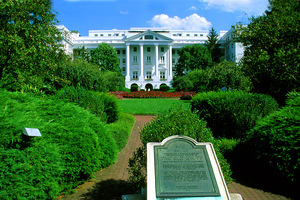 | Back to e-WV
| Back to e-WV
 The West Virginia Encyclopedia
The West Virginia Encyclopedia
 | Back to e-WV
| Back to e-WV
 The West Virginia Encyclopedia
The West Virginia Encyclopedia





















Rich in history and natural resources, Greenbrier County is the fifth-oldest and second-largest county in West Virginia. Formed during the Revolutionary War, March 1, 1778, from portions of Botetourt and Montgomery counties, Greenbrier County is named for the Greenbrier River.
Lewisburg, the county seat of Greenbrier County, was established in 1782. It is home to the historic Old Stone Presbyterian Church as well as the North House Museum. The West Virginia School of Osteopathic Medicine is located in Lewisburg. The town was the site of a battle during the Civil War on May 23, 1862.
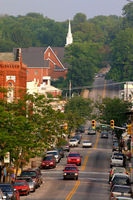
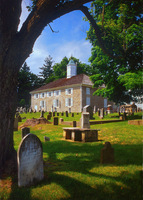
The town of White Sulphur Springs is named for its famous mineral springs, whose curative powers were first reported in 1778. It is home to the Greenbrier, a resort that traces its origins to the late 18th century. Located directly across from the entrance to the Greenbrier, Kates Mountain is a familiar landmark in eastern Greenbrier County. A Civil War battle took place in White Sulphur in August 1863.

Greenbrier State Forest was created in 1938. Like all state forests, it is dedicated to a multiple-use, sustained-yield program. The 5,130-acre forest is richly populated with wildlife.
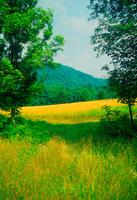
The Greenbrier River rises in two forks in the high mountains at the northern end of Pocahontas County. The East and West forks join at Durbin, and from there the river flows in a generally southwesterly direction through Pocahontas and Greenbrier counties before joining the New River at Hinton in Summers County.
Organ Cave is located at the community of Organ Cave, about five miles southeast of Lewisburg. Organ Cave has 11 entrances and is the second-largest cave in West Virginia with about 40 miles of surveyed passages.
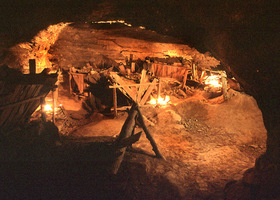
Lost World Caverns is one of the largest caverns in West Virginia and a popular tourist attraction. The cave has about 6,000 feet of surveyed passages, and about 600 feet can be seen on the normal lighted tour.
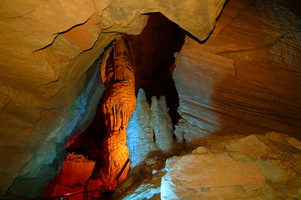
The State Fair of West Virginia is held every summer in Fairlea. The event features agricultural displays, entertainment, carnival rides, and other activities.

The Midland Trail was the first state-maintained highway in West Virginia. In 1988, the section from White Sulphur Springs to the state capitol was designated as West Virginia’s first state scenic highway.
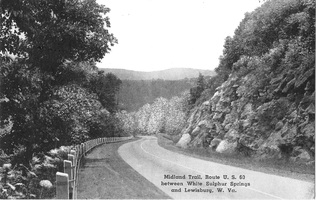
The Greenbrier River Trail is West Virginia’s Millennium Legacy Trail, one of 50 such trails nationwide. It is perhaps the best-known and most used rail-trail in the state and is managed by West Virginia’s state park system. The 77-mile trail follows the old Greenbrier Division of the Chesapeake & Ohio Railway along the Greenbrier River, traveling from Cass in Pocahontas County to Caldwell, near Lewisburg.
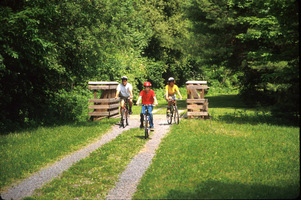
Located at Neola, the Anthony Correctional Center is a minimum-security facility for young adults.
Blue Sulphur Springs, located near Smoot, was the site of a mineral spring resort from 1834 until 1858, one of many in the Western Virginia mountains.
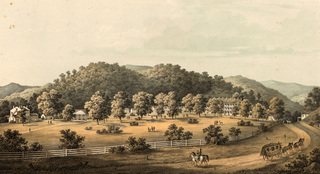
Oakhurst Links, near White Sulphur Springs, was the first organized golf club and course in America. It was founded in 1884 at Oakhurst, the estate of Russell Montague, who had moved from Boston to Greenbrier County in 1878.
The Monongahela National Forest is the only national forest that is completely within the boundaries of West Virginia.
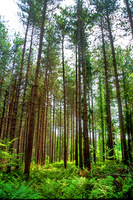
Sam Black Church was erected in 1902 in memory of the country preacher Sam Black. His name is written in large letters across the doorway of the building, and today the community is named Sam Black Church.
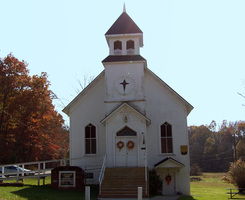
The Meadow River is a major tributary of Gauley River. It has its headwaters along the Greenbrier-Summers county line, in the high mountains northwest of Alderson.
Rainelle, once one of West Virginia’s busiest sawmill towns, was built by the Meadow River Lumber Company about 1910. It was named for Thomas and John Raine, the company founders.
Fort Donnally in Rader’s Valley, Greenbrier County, was the scene of one of the largest Revolutionary War battles in Western Virginia.
The Friars Hole Cave is the longest cave in West Virginia, with eight entrances and 44 miles of surveyed passage.
Beginning at Richwood and extending to a point near Marlinton, the Highland Scenic Highway provides access to the high mountains at the headwaters of the Cranberry and Williams rivers.
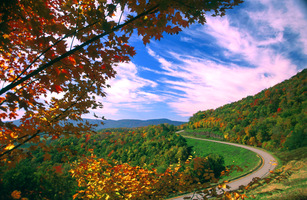
The Greenbrier traces its origins to the late 18th century and the health-restoring use of the mineral water from the White Sulphur Spring.
